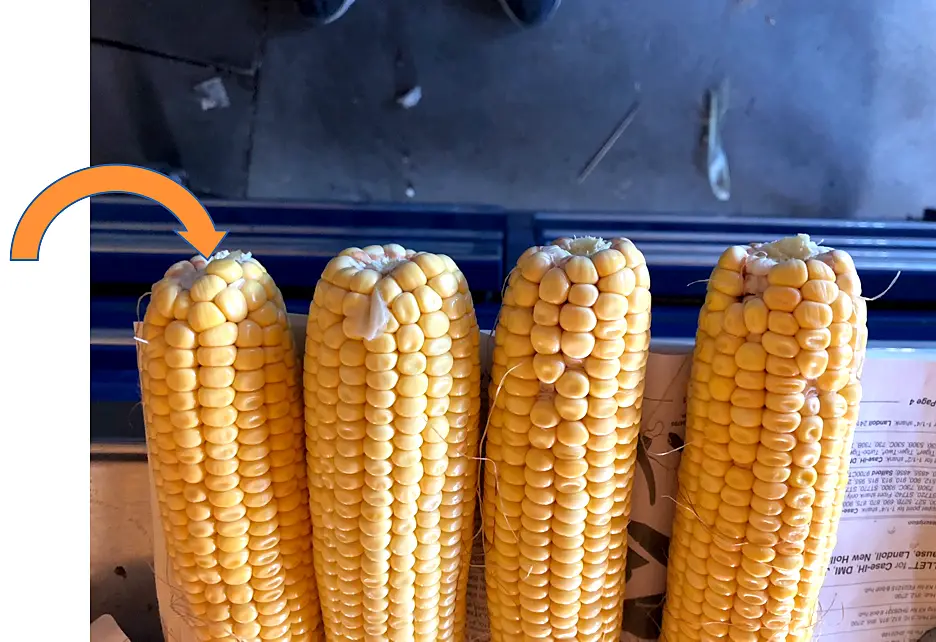July is the pivotal month for corn growing, as growers and seed specialists like myself spend hours watching the highs and lows of each day, hoping to keep the highs below the 86 degree threshold while getting lows below 70 at night to give those corn plants a break. In cases of readily available moisture, these concerns are often not a major issue, but in much of the corn belt in 2021, drought stress has given much cause for concern for our fall harvest.
What are some of these concerns? First, in a lot of dry areas, the amount of corn rootworm beetle pressure is immense. I have been actively trapping beetles since the middle of July and some of the fields are showing an average of 43 beetles caught per plant per day! That is roughly 20 times the economic threshold. These numbers are downright scary thinking about the number eggs that these adults are laying and will be resulting in root-feeding larvae next year. Another threat potentially related to this drought stress and excessive rootworm pressure has me equally concerned for this year’s crop; poor kernel development at the butt of the ears.
Many of you who have been in the seed business for some time have encountered “ear slippage” in the fall. The bulk of the time, growers immediately want to blame the hybrid for their ears lying on the ground, but that is just not the case. One contributing factor to this is drought stress. The shank and ear are anatomically similar to the stalk above the ear attachment. Therefore, it is no surprise that if that portion the stalk is fragile from drought stress, so will be the shank. This year, another stress related cause of possible ear slippage is simply poor pollination of the butt of the ear. Note the arrowed areas of the picture below: overall the ears look filled out fairly well, but the kernel spacing around the butt is irregular. This causes those kernels to grow quite large and wildly out of place. Ultimately they push the ear away from the shank attachment. The result is ear slippage.
In addition to severe heat and extended drought at this stage of ear development, other factors can influence pollination. These include improper applications of some herbicides, insect feeding on early emerged silks that pollinate these first ovules, as well as poor fertility. Heat stress is usually the major culprit alone, or in conjunction with these other influences.
So what can be done if this is a potential problem? I would strongly encourage growers to spend some time this fall gauging whether or not this could be an issue as well as looking at general stalk quality and then prioritizing those fields for earlier harvest. There is really no solution other than harvesting while the ears are still intact. So check out your fields and put together a harvest plan, or you might feel the pain of ear slippage.

